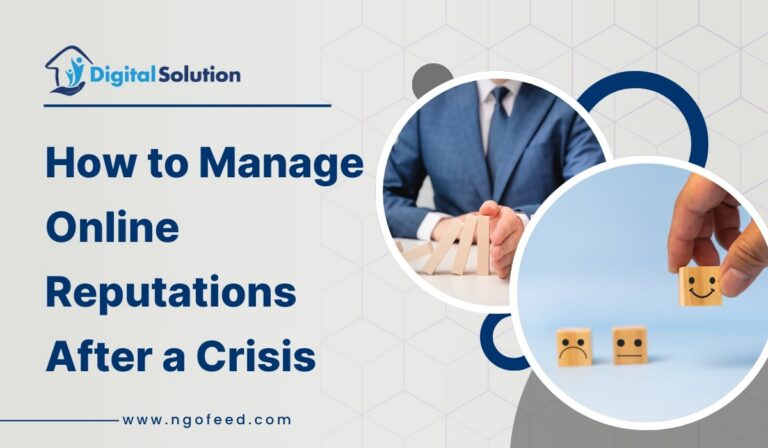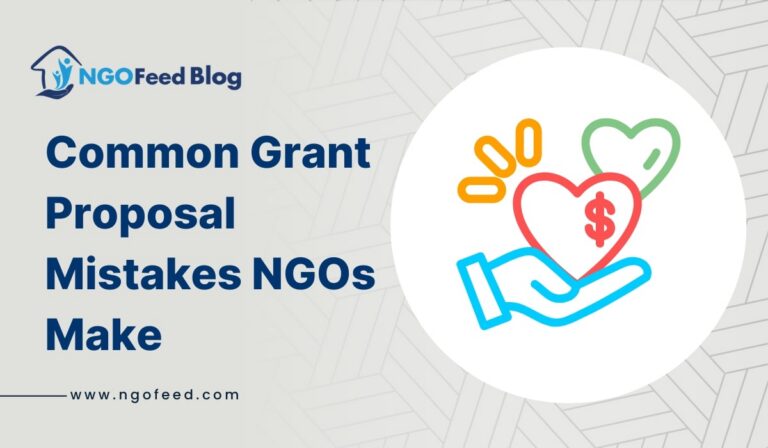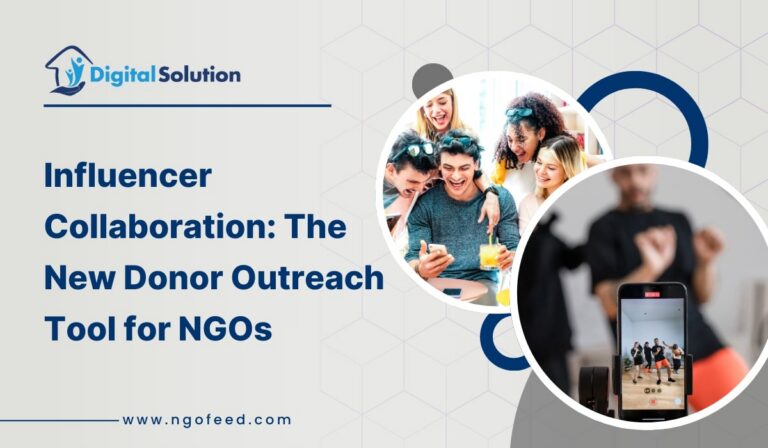Future of NGOs How Trends Like Web3: Non-governmental organizations (NGOs), crucial for social impact, are on the verge of a major transformation. Historically dependent on conventional funding models and operational frameworks, these organizations are now ready to adopt disruptive technologies such as Web3 and Artificial Intelligence (AI). These advancements hold the potential to change significantly how NGOs function, interact with stakeholders, and fulfil their objectives.
Table of Contents
The Dawn of Web3 for Social Impact:
Web3, the decentralized version of the internet, presents an appealing alternative to the centralized systems that have traditionally directed NGO operations. Its fundamental principles – decentralization, transparency, and user ownership – integrate perfectly with the core values of social impact.
Decentralized Autonomous Organizations (DAOs) for Governance:
DAOs, built on blockchain technology, enable transparent and democratic decision-making processes. NGOs can utilize DAOs to distribute authority among stakeholders, including beneficiaries, donors, and volunteers. This promotes inclusivity and accountability, dismantling conventional hierarchical frameworks. For instance, a DAO could oversee the allocation of aid in areas affected by disasters, with token holders voting on the distribution of resources and project initiatives.
Also Read: How to Start an NGO Crowdfunding Campaign?
Blockchain for Transparent Funding and Tracking:
Blockchain’s permanence guarantees that every transaction is documented and verifiable, improving transparency in both fundraising and spending. Donors can monitor their donations in real-time, building trust and lowering the risk of corruption. Smart contracts can facilitate the automated release of funds based on predetermined criteria, ensuring that resources efficiently reach their designated recipients. The use of stable coins and cryptocurrencies can create new pathways for international donations, particularly in regions where traditional banking systems are scarce.
Non-Fungible Tokens (NFTs) for Fundraising and Community Building:
NFTs can be utilized to develop exclusive digital assets that signify donations, memberships, or project achievements. This enables NGOs to connect with donors in innovative and creative manners, cultivating a sense of ownership and community. For example, an NGO could release NFTs that denote the planting of a tree or the provision of clean water to a family. These NFTs could offer holders access to exclusive content, events, or voting privileges within the organization. NFT-based art initiatives can be implemented to generate funds and raise awareness for causes.
Decentralized Identity (DID) for Beneficiary Empowerment:
DID solutions empower beneficiaries to manage their personal information, improving privacy and security. This is especially vital for vulnerable groups who may face the risk of exploitation. DID can also simplify service delivery, allowing beneficiaries to easily demonstrate their eligibility for aid without having to navigate complex paperwork.’
Also Read: Microdonations for Nonprofits
AI: Enhancing Efficiency and Impact:
The capacity of AI to analyse extensive data sets and automate intricate tasks offers significant opportunities for NGOs to refine their operations and amplify their impact.
Data Analytics for Needs Assessment and Program Evaluation:
AI-driven data analytics can assist NGOs in recognizing trends, patterns, and insights from large data sets, enabling them to more accurately understand their beneficiaries’ needs and assess the efficiency of their programs. For instance, AI algorithms can examine social media data to detect emerging crises or forecast the probability of disease outbreaks based on environmental conditions.
Natural Language Processing (NLP) for Communication and Outreach:
NLP can be utilized to automate interactions with beneficiaries, donors, and volunteers, delivering tailored support and information. Chatbots can respond to frequently asked questions, offer information on available resources, and gather feedback from beneficiaries. NLP may also be applied to translate documents and communications into various languages, enhancing information accessibility for diverse communities.
Also Read: Gen Z is the Next Wave of Donors
Machine Learning for Resource Allocation and Risk Management:
Machine learning algorithms can assist NGOs in optimizing resource distribution by anticipating demand for services and pinpointing the areas of greatest necessity.AI can additionally evaluate risks, such as the probability of natural disasters or financial crises, enabling NGOs to adopt proactive measures to mitigate potential dangers.
Image and Video Analysis for Monitoring and Evaluation:
AI-driven image and video analysis can be employed to track the progress of projects, such as deforestation or infrastructure development. It can also evaluate the effects of interventions, such as providing clean water or sanitation facilities.
AI for personalized education and training:
AI can be utilized to tailor educational content and training programs to fulfil the unique needs of individual beneficiaries. It can offer personalized feedback and assistance, aiding beneficiaries in acquiring the skills and knowledge required for success.
Also Read: Gen Z is the Next Wave of Donors
Challenges and Considerations Future of NGOs How Trends Like Web3
Although Web3 and AI present significant potential, NGOs must also confront several challenges:
- Digital Divide: Ensuring fair access to technology and digital literacy is vital to prevent exacerbating existing disparities.
- Data Privacy and Security: NGOs should prioritize ethical and responsible data usage, safeguarding the privacy and security of their beneficiaries.
- Capacity Building: NGOs must invest in training and capacity development to equip their staff with the skills and knowledge essential for effectively utilizing these technologies.
- Regulatory Uncertainty: The quickly changing regulatory environment surrounding Web3 and AI demands that NGOs remain informed and adjust to evolving legal frameworks.
- Ethical Considerations: AI algorithms can carry forward biases present in the data on which they are trained. NGOs need to be cognizant of these biases and take measures to mitigate them. The ethical use of AI and the transparency of AI-driven decision-making is crucial.
The Future of Impact:
The incorporation of Web3 and AI into the NGO sector is not just a technological advancement; it signifies a fundamental transformation in how social impact is generated and maintained. By adopting these innovations, NGOs can:
Also Read: Email Automation For NGOs
- Enhance transparency and accountability.
- Improve efficiency and effectiveness.
- Empower beneficiaries and stakeholders.
- Foster greater collaboration and community engagement.
- Unlock new funding and resource mobilization opportunities.
The future of non-governmental organizations (NGOs) depends on their capacity to adjust and create new solutions. By welcoming the transformative potential of Web3 and AI, they can develop a more fair, just, and sustainable world for everyone. Nevertheless, it is crucial to keep in mind that technology serves as a tool and that it is the ethical application, along with the human factor behind the technology, that will ultimately decide the effectiveness of these implementations.
Conclusion
In closing, the merging of Web3 and AI offers a revolutionary chance for NGOs to rethink their operational models and enhance their social impact. While it is essential to address the inherent issues of digital equity, data security, and ethical matters, the possible advantages are unmistakable. By adopting decentralized governance through DAOs, utilizing blockchain for transparent funding, employing NFTs for creative fundraising, and leveraging AI for data-driven decision-making and personalized outreach, NGOs can promote enhanced transparency, efficiency, and inclusivity.
Also Read: Leveraging (X) Twitter Trends for Nonprofits
This technological advancement isn’t merely about embracing new tools; it’s about fundamentally altering the relationship between NGOs, their beneficiaries, and their donors. It’s about creating a more equitable and inclusive ecosystem for social change. In the end, the effective integration of Web3 and AI will be reliant on the sector’s dedication to ethical application, ongoing education, and a human-centric approach that emphasizes the needs of the communities they support. As NGOs navigate this changing environment, their capacity to adapt and innovate will be crucial in establishing a more just and sustainable future for everyone.









